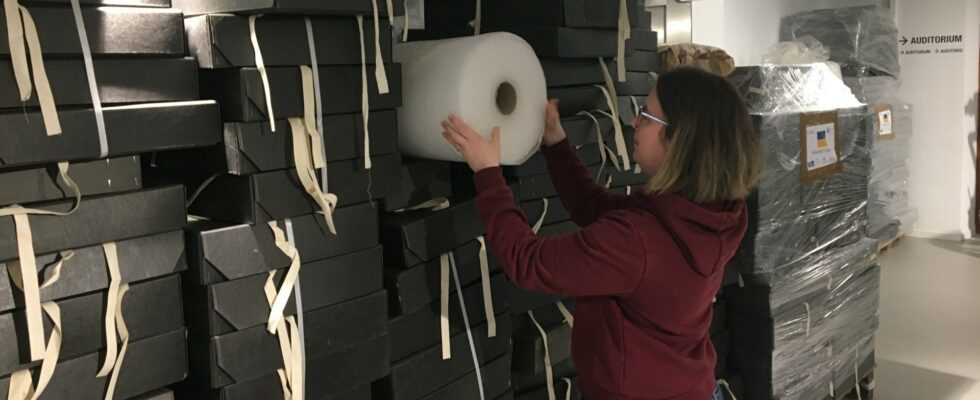“We can’t stay there without doing anything, so we try to participate on our scale and with our means”, summarizes Claire Léger, the manager of the collections of the departmental museum of the Resistance in Toulouse. For the past two weeks, donations collected from cultural establishments, museums and archives in the region have been piling up in the reserves. Material to protect the cultural heritage, threatened by the war in Ukraine.
“The request of our Ukrainian counterparts who sent us the list of equipment they needed is to have all types of packaging and packaging”, she specifies at the microphone of Europe 1. They have collected ten tons of materials. Rolls of bubble wrap will be used to wrap bulk objects or monumental statues that cannot be moved. The medium wooden plates will be used to reinforce and cover the windows or the stained glass windows of the churches.
Fifteen museums mobilized
They also collected hundreds of archival boxes. “They are PH neutral,” says Claire Léger. “They are not acidic to allow material such as graphic arts, photographs or paper archives to be preserved in good conditions and over the long term. It is for the conservation of everything that makes up the Ukrainian heritage of the ‘Civil status in the municipal or political archives’.
In all, fifteen museums from six departments of the Occitanie region took part in this operation organized by Icom, the International Council of Museums. Some boxes still display labels from the archives of the Tarn or Lot departments. “We had to mobilize colleagues within very tight deadlines,” she explains. “The goal is not to offer them new equipment but that they can use to manage the emergency and the crisis”.
Protect the history and culture of the populations
It is the Blue Shield association, specialized in the protection of cultural heritage all over the world, which takes care of the logistics of this operation. From this Friday, the truck chartered free of charge by the carrier Chenue will head for Paris, then Poland and finally Ukraine at the end of next week.
The idea is not to repatriate the works but to help the Ukrainian population to protect its heritage. “Under no circumstances will the works leave the territory. It could be considered as spoliation or theft if the conflict ever escalates”, explains Hélène Gay of the Departmental Archives of Haute-Garonne and member of the Blue Shield. “For the moment it is really to secure the works on Ukrainian territory. This is what was done in France during the Second World War. They will hide them and somewhere the less we talk about them, the less we will cite the works and the people who will take care of them, the more we will protect them”.
The idea is also to allow the Ukrainian people to preserve their history and their culture. “We realized after the Second World War that destroying heritage complicates the resilience of a population”, specifies Hélène Gay. “Targeting the destruction of cultural heritage is really targeting the destruction of a population with all its local history. By protecting heritage, we also protect the history of populations”.
